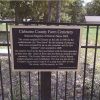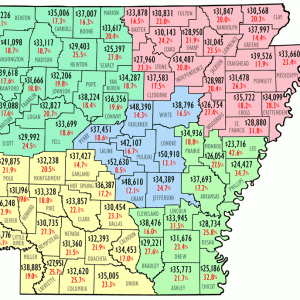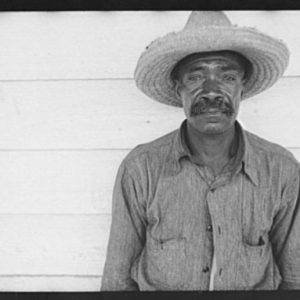calsfoundation@cals.org
Poverty
In 2008, the U.S. Census Bureau reported that the national average of individuals living in poverty was 13.2 percent. At 17.3 percent, Arkansas tied for second among states with the highest poverty rates. The two states with the highest poverty rates are adjacent to Arkansas: Mississippi was the highest with 21.2 percent, and Louisiana second highest at 17.3 percent. They were followed by West Virginia at 17 percent and Kentucky, which tied Arkansas with 17.3 percent. Seven of the top ten impoverished states were in the South.
Historical Background
The story of poverty in the South is the story of economic development and social changes over time. Patterns of poverty in Arkansas have developed and fluctuated over time in relation to the physical geography of the state and to changes in economic and political behavior. When the land of Arkansas was acquired in the 1803 Louisiana Purchase, many Native Americans resided on it. By 1836, when Arkansas became a state, most of the tribes had signed over their land. With statehood came white settlers, largely from other Southern states with established systems of slavery and plantation agriculture producing cotton. The cotton crop went from 65,344 bales in 1850 to 367,393 bales in 1860. This early economic prosperity was yoked to slavery and was more concentrated in the Delta region’s richer soils.
The use of slave labor essentially subsidized the white landowners and over-inflated their actual wealth. This tenuous system began a transformation toward tenant farming or sharecropping after the Civil War. Upon the state’s readmittance to the Union, Governor Powell Clayton began implementing a reconstruction plan. Clayton’s plan presented a direct threat to the established white privilege and was met directly with assassination attempts and such an insurgence of the Ku Klux Klan that he declared martial law in fourteen counties.
From 1875 to 1895, Arkansas went from having virtually no railroads to more than 3,300 miles of tracks. This simultaneously created a migration toward cities and additional demand for agricultural goods. In this twenty-year period, the percentage of land dedicated for cotton production jumped from 29 to 57 percent. The railroad also brought diversification and demand for new commodities. The exploitation of coal reserves and the hardwood timber of the upland regions of the state suddenly became a booming enterprise. Coal production in Arkansas jumped from just under 15,000 tons annually in 1880 to almost 2 million tons by 1900. The hardwoods and coal of the state drove the value of manufactured goods up from $6.7 million to $45 million. The apparent prosperity of this era brought with it many social changes and was earned at the cost of poor farmers, sharecroppers, and recent immigrants. Again, between 1880 and 1900, tenant farming went from 31 percent of farmers to 45 percent.
Additionally, demand could not keep up with supply, cotton prices dropped, and poverty rates went up. This volatile mix was responded to by several farmers’ unions such as the Brothers of Freedom, Progressive Farmers and Household Union of America, Knights of Labor, and Agricultural Wheel. Farmers were put in the untenable position of having to grow more cash crops such as cotton in order to secure loans, which subsequently led to them getting lower and lower prices for their efforts. Arkansas farmers were often forced to commit the following year’s crops to the bank in order to finance the current year’s production.
Economic prosperity and poverty in Arkansas were inextricably linked to a legacy of racialized access to land ownership. This legacy erupted in the 1919 Elaine Massacre in Phillips County, a county with some of the richest and most productive soil in the Delta. While the Progressive Era held out many hopes for positive social transformation, the vast inequality by class and by race in Arkansas held firm.
Attempts at educational reform, a key factor in one’s economic station, were ineffectual. A study conducted in the 1920s concluded that “Arkansas’s children received an education that put them at a distinct disadvantage in the modern world.” The Great Depression stalled advances that might have been made. Advances in education were also stunted by religious opposition. Opponents of the teaching of evolutionary theory in public schools compounded the state’s negative image within the United States. On top of this, the disease pellagra (caused by nutritional deficiencies) was not only a symptom of poverty but also a contributing factor to the popular image of slothful, lazy, rural folk because the outward signs of pellagra included a lack of energy. This and other medical conditions such as hookworm and malaria solidified negative stereotypes of those in poverty in Arkansas.
The post–World War II era brought renewed industrialization and mechanization to the agricultural sector of the economy, reduced even further the need for manual laborers, and saw the end of the institutionalized racism of segregation. While legislation was apparently liberating in some ways, in others it conscripted workers to menial labor for generations to come. Arkansas’s “right-to-work” legislation effectively muted union voices in the state. The subsequent rise of non-union corporations such as Wal-Mart and J. B. Hunt led to an ever increasing number of working poor. This is borne out in the data showing that the poverty rate is much higher than the unemployment rate in the state. In 2010, for example, the unemployment rate in Arkansas was 7.9 percent, while the national average was 9.4 percent. North Dakota had a low of 3.8 percent, and Nevada a high of 14.5 percent. This reflects that while many Arkansans are employed, it is in lower-wage, lower-skilled positions. Other economic giants in the state such as Tyson Foods and O.K. Foods operate with low-paid employees and attract immigrant labor willing to work very difficult jobs for very little pay.
Current Trends
There are different ways in which to measure poverty. Most frequently, poverty is referenced according to how it is measured by the U.S. Census Bureau. The technical poverty markers are measured by a combination of the amount of annual income and the minimal amount of money needed to support an individual or a family of varying sizes. In 2008, the official poverty thresholds were:
· $11,201 for a single individual under sixty-five years of age
· $10,326 for a single individual sixty-five years of age or older
· $14,840 for a single parent with one child
· $17,346 for a single parent with two children
· $14,417 for two adults with no children
· $17,330 for two adults with one child
· $21,834 for two adults with two children
· $25,694 for two adults with three children
A common figure used for comparing states’ and counties’ financial well-being is median household income. The median household income for Arkansas in 2008 was $38,820. This means that half the households in Arkansas earned more than that amount, and the other half earned less. The five Arkansas counties with the lowest median household income were: Chicot ($24,809), Lee ($25,178), Searcy ($25,547), Woodruff ($26,185), and Phillips ($26,436). Not a single county in 2008 was above the national average of $52,029. The five counties with the highest median household income were: Benton ($51,397), Saline ($50,133), Lonoke ($49,241), Pulaski ($45,215), and Grant ($45,165). For comparison, the state of Maryland had the highest median household income with $70,482, whereas Mississippi reported the lowest with $37,818.
A closer look at poverty data for Arkansas reveals some regional trends in poverty rates. The counties with the highest poverty rates were: Lee (42.6 percent), Phillips (34.7 percent), St. Francis (31.8 percent), Lincoln (31.5 percent), and Desha (25.8 percent). All of these counties are located in the Mississippi River Delta, where an agricultural heritage based upon slavery, and subsequently sharecropping, created an economic situation of generational poverty for poor blacks and whites alike. Mechanization of agricultural tasks did not alleviate this situation, given that it created even less demand for agricultural labor. For example, Phillips County had the second-highest poverty rate in Arkansas in 2008 and the single highest rate of impoverished children, but it was also in the top five counties in agricultural sales in 2007.
The counties with the lowest poverty rates were: Saline (9.6 percent), Benton (11.1 percent), Grant (11.5 percent), and Lonoke (11.7 percent). Only these four counties had poverty rates lower than the national average. Saline, Grant, and Lonoke counties benefit from their proximity to Little Rock (Pulaski County). Again, these economic patterns reflect the racialized history of the state. As desegregation occurred, so too did the “white flight” out of the city. Benton County benefits economically from corporations dependent upon low-wage labor (the Wal-Mart headquarters is located there), as well as a high percentage of out-of-state retirees relocating to that county.
Poverty and Minorities
A social minority is a group of individuals who have been systematically and institutionally prevented from accessing economic, political, educational, and other advantages offered by society. For this very reason, it is not surprising that minorities are disproportionately represented in the poverty figures.
In 2008 in Arkansas, 13.6 percent of whites were in poverty. Within the population of those in poverty, whites made up 54.8 percent. At the same time, 42.8 percent of all blacks were in poverty and that constituted 34.8 percent of all those in poverty. For Latinos, 25.7 percent were reported to be in poverty, representing 6.9 percent of all those in poverty. Whites clearly make up the majority of those in poverty, but there is a proportional overrepresentation of minorities in poverty, precisely because they are a social minority.
Sociologists have noted that two other social minorities—women and children—have nationally and worldwide increasingly made up the largest proportion of those in poverty. This trend is referred to as the “feminization of poverty.” In 2008 in Arkansas, the median earnings for men were $36,839, whereas for women they were $27,487. In other words, women earned 74.6 percent of what men earned. The disparity of income differences between men and women is subsequently borne out in poverty rates. In 2008, 19 percent of women living in Arkansas were in poverty, whereas 14 percent of men were. Nationally, the percentage of children in poverty under the age of eighteen was 19 percent, while in Arkansas it was 24.7 percent.
The number of Arkansans in the category of “working poor” most likely contributes to this high number. These are people who are working full time but at minimum wage and are still under the poverty line based on how many children they have. Counties in Arkansas reporting the highest incidence of child poverty were: Phillips (49.3 percent), Lee (46.3 percent), Chicot (44.1 percent), St. Francis (41.8 percent), and Searcy (41.4 percent). Six counties had child poverty rates lower than the national average: Saline (13.4 percent), Benton (15.1 percent), Lonoke (15.2 percent), Grant (16.4 percent), Faulkner (18.2 percent), and Washington (18.8 percent).
Urban versus Rural Education
Where people live also influences income and thus poverty rates. The 2009 estimate put 1,144,831 Arkansans living in rural areas, while 1,744,619 are estimated to be living in urban areas. The rural poverty rate in 2009 was 21.2 percent, while the urban rate was 15.7 percent.
The rural-urban split reveals an even greater disparity in level of educational attainment, long known to be a key variable for ameliorating poverty. In 2000, 16.7 percent of people twenty-five and older then living in Arkansas reported that they had completed college. In rural areas that figure was 12.2 percent, and in urban 20.2 percent. The national average in 2000 was 24.4 percent. As recently as 1980, 50.9 percent of rural residents in Arkansas had not completed high school, while the figure was only 38.6 percent in urban areas. By 2000, these figures dropped to 29.3 percent and 21.1 percent, respectively. The more recent rise in educational attainment holds promise that poverty rates will decline in the future.
In 2007 in the United States, those with less than a ninth-grade education had a median income of $26,963, those with a high school diploma $49,739, and those with a bachelor’s degree $92,327. Nationally, it appears that educational attainment makes a significant impact on one’s economic status.
Conclusion
Accounting for trends in poverty is a complex process. It requires one to look at historical, political, and economic patterns locally, nationally, and globally. Arkansans’ fortunes are directly linked to past and present-day political and economic trends as well as to simple geography and the availability of natural resources. However, individuals are not entirely at the mercy of their circumstances. Education repeatedly emerges as a powerful variable that has the ability to transcend external forces that limit one’s economic potential and subsequently could alter the landscape of poverty in the state of Arkansas.
For additional information:
Alba, Richard, Ruben Rumbaut, and Karen Marotz. “A Distorted Nation: Perceptions of Racial/Ethnic Group Sizes and Attitudes toward Immigrants and Other Minorities.” Social Forces 84 (December 2005): 901–919.
Bureau of Labor Statistics. http://www.bls.gov/lau/ (accessed February 8, 2022).
“Income, Expenditures, Poverty, and Wealth.” U.S. Census Bureau. http://www.census.gov/prod/2009pubs/10statab/income.pdf (accessed February 8, 2022).
Goering, Christian Z., David A. Jolliffe, Laine Gates, Kelly Riley, and Hillary Swanton. “The Arkansas Delta Oral History Project: Understanding Poverty through Literacy Outreach.” In Reclaiming the Rural: Essays on Literacy, Rhetoric, and Pedagogy. Carbondale: Southern Illinois University Press, 2012.
Miller, Madison. “The High Price of Poverty in Arkansas’s Courts: Rethinking the Utility of Municipal Fines and Fees.” Arkansas Law Review 74.3 (2021): 547–576. Online at https://scholarworks.uark.edu/alr/vol74/iss3/6/ (accessed February 8, 2022).
National Poverty Center. University of Michigan Gerald R. Ford School of Public Policy. http://npc.umich.edu/poverty/ (accessed February 8, 2022).
Sanford, Juanita. Poverty in the Land of Opportunity. Little Rock: 1978.
State Health Facts. Kaiser Family Foundation. http://www.statehealthfacts.org (accessed February 8, 2022).
Daniel Maher
University of Arkansas at Fort Smith
 Association of Community Organizations for Reform Now (ACORN)
Association of Community Organizations for Reform Now (ACORN) Birth Control Movement
Birth Control Movement Central Arkansas Development Council
Central Arkansas Development Council Malnutrition
Malnutrition Philanthropy
Philanthropy Poorhouses
Poorhouses State of Arkansas v. Artoria Smith
State of Arkansas v. Artoria Smith Household Income/Poverty Level Map
Household Income/Poverty Level Map  Sharecropper
Sharecropper  Sharecropper Family
Sharecropper Family 




Comments
No comments on this entry yet.